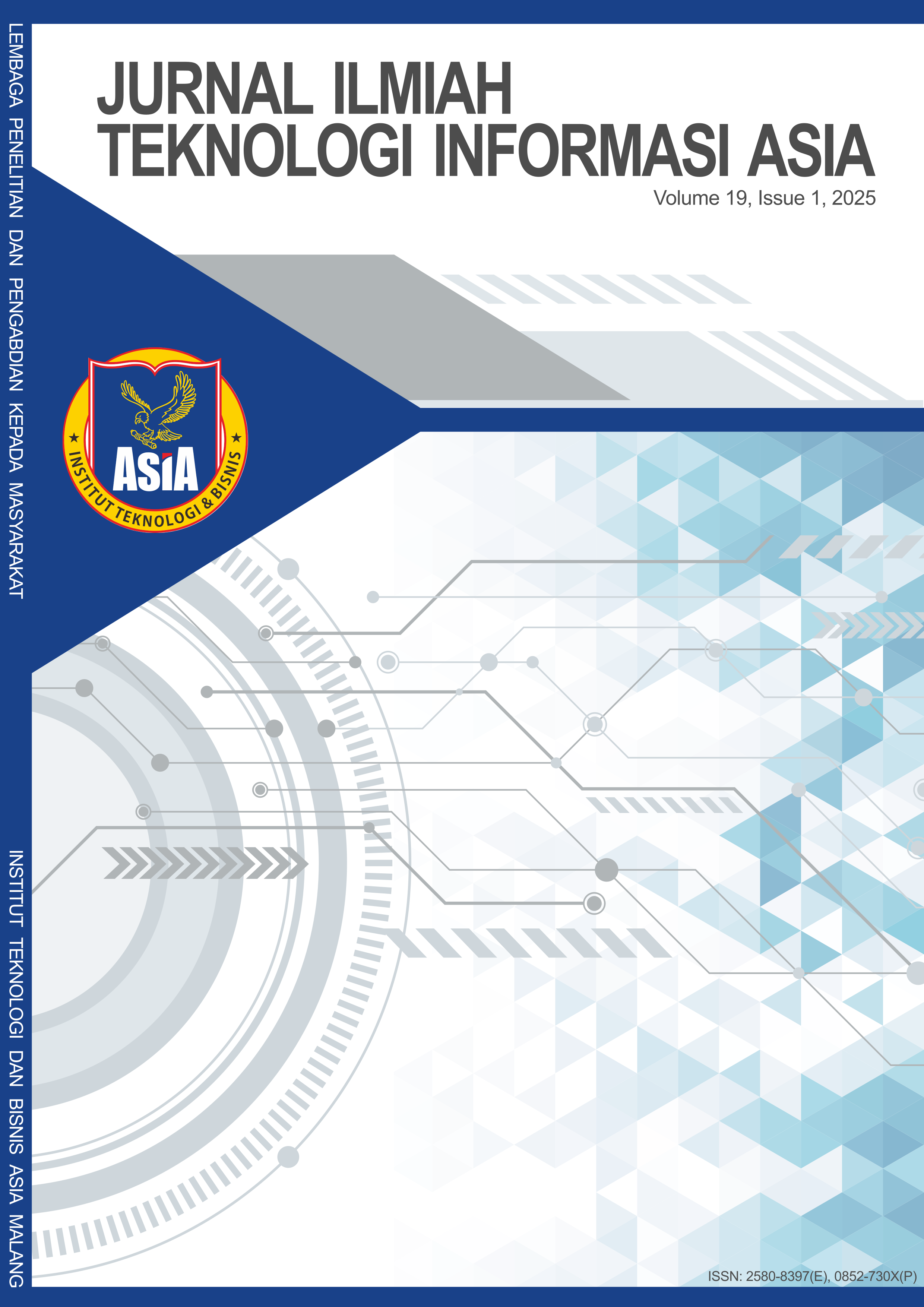Flood monitoring and early‑warning system based on the Internet of Things (IoT)
DOI:
https://doi.org/10.32815/jitika.v19i1.1103Keywords:
blynk, iot, monitoring, early warning, telegramAbstract
Flood disasters are a recurring problem in Sragen Regency, primarily caused by the overflow of the Bengawan Solo River during the rainy season with high rainfall intensity and duration exceeding 4 hours. According to data from the Sragen Regency Disaster Management Agency (BPBD), over the past seven years, 46 floods have occurred in 16 villages across 20 sub-districts in Sragen Regency. The impacts of these disasters include infrastructure damage, material losses, and threats to human safety, further aggravated by the limited availability of early warning tools. To mitigate these impacts, an effective monitoring and early warning system is needed. The objective of this research is to develop an Internet of Things (IoT)-based system capable of monitoring water conditions and providing early warnings through Telegram notifications using the Blynk application. This system is designed to provide accurate and timely information regarding water levels and early flood warnings to the community in Sragen Regency. In its development, the system utilizes an HC-SR04 ultrasonic sensor to measure water surface height, an ESP32 microcontroller for data processing, and Blynk IoT and a Telegram bot as remote notification media. Additionally, visual indicators such as LED lights and a buzzer are used to provide local early warning signals regarding potential floods. The innovation offered by this IoT-based flood monitoring system focuses on real-time detection and anticipation of flood threats. This research also developed a system integrating Blynk with Telegram, enabling rapid notification delivery. Test results show that the system is capable of detecting water levels with an accuracy reaching 95%, providing early notifications with an average latency of 1.2 seconds, and maintaining connection stability up to 99%. Through this research, it is hoped to provide a significant contribution to the development of IoT-based disaster mitigation technology. Compared to conventional systems, this innovation offers high accuracy, more affordable costs, and ease of use, which is expected to assist disaster management officials and the community in mitigating flood risks and enhancing disaster preparedness in Sragen Regency.
Downloads
References
Alfaridzi, A. R., Kurniawan, E., & Sugiana, A. (2020, April). IoT Blynk Untuk Sistem Monitoring Pendeteksi Dini Banjir Sungai Citarum Terintegrasi Media Sosial. E-Proceeding of Engineering.
Dasril, D., Indou, H., & Suppa, R. (2024). Prototype Alat Pendeteksi Banjir Menggunakan Arduino Berbasis Iot. Jurnal Informatika Dan Teknik Elektro Terapan, 12(3). https://doi.org/10.23960/jitet.v12i3.5135
Ghazi, A., Syaputra, I. A., Salam, N., & Setiawan, K. (2024). Implementasi Alat Pendeteksi Banjir Berbasis Internet Of Things Via Telegram Pada Kampung Pengarengan. INTECOMS: Journal of Information Technology and Computer Science, 7(5), 1509–1513. https://doi.org/10.31539/intecoms.v7i5.11514
Husnah, K., Munazilin, A., & Lazim, F. (2024). Rancang Bangun Alat Monitoring Ketinggian Air dan Peringatan Dini Banjir Berbasis Internet of Things (IoT). Jurnal Ilmu Komputer (JUIK), 4(2). https://doi.org/10.31314/juik.v4i2.3286
Ilmuddin, I., & Putra, P. A. (2022). Perancangan Prototipe Pendeteksi Banjir Berbasis Internet of Things (IoT). Tolis Ilmiah: Jurnal Penelitian, 4(2). https://doi.org/10.56630/jti.v4i2.246
Meisak, D., Hendri, & Agustini, S. R. (2022). Penerapan Metode Prototype Pada Perancangan Sistem Informasi Penjualan Mediatama Solusindo Jambi. STORAGE: Jurnal Ilmiah Teknik Dan Ilmu Komputer, 1(4), 1–11. https://doi.org/10.55123/storage.v1i4.1066
Nasional, B. S. (2022). Sistem peringatan dini bencana - Bagian 3: Banjir. In https://akses-sni.bsn.go.id/viewsni/baca/9706. BSN. https://akses-sni.bsn.go.id/viewsni/baca/9706
Nofrialdi, R., & Ikhsan, I. (2023). Rancang Bangun Monitoring dan Peringatan Dini Banjir Berbasis Internet Of Things (IoT) di Pusdaplops PB BPBD Sumatera Barat. Jurnal Pustaka Robot Sister (Jurnal Pusat Akses Kajian Robotika, Sistem Tertanam, Dan Sistem Terdistribusi), 1(1), 1–5. https://doi.org/10.55382/jurnalpustakarobotsister.v1i1.322
Prastyo, E. A. (2022). Berbagai Macam Perintah pada Arduino. Https://Www.Arduinoindonesia.Id/2022/09/Berbagai-Macam-Perintah-Pada-Arduino.Html.
Pratama, B. P. W. P. (2024). Implementasi Website Sebagai Sistem Monitoring Penanggulangan Bencana Alam Banjir Untuk Satuan Teritorial Dan Pemerintahan Berbasis MTQQ. Jurnal Telkommil, 5(2), 1–6. https://doi.org/10.54317/kom.v5i2.589
Razor, A. (2024). Sensor Ultrasonik Arduino HC-SR04 : Cara Kerja dan Program. Https://Www.Aldyrazor.Com/2020/05/Sensor-Ultrasonik-Arduino.Html.
Setiawan, D., Jaya, H., Nurarif, S., Syahputra, T., & Syahril, M. (2022). Implementasi ESP32-Cam dan Blynk Pada Wifi Door Lock System Menggunakan Teknik Duplex. Journal of Science and Social Research, 5(1), 159. https://doi.org/10.54314/jssr.v5i1.807
Setyawan, H. P., Fathurrahman, M. F., Hasyim, M., Rakhmatika, M. D. M., & Firmansyah, R. A. (2023, March 11). Sistem Monitoring dan Peringatan Dini Banjir Pada Jalan Raya Menggunakan Komunikasi Nirkabel Jarak Jauh Dengan Tampilan Pada Android. Seminar Nasional Teknik Elektro, Sistem Informasi, Dan Teknik Informatika (SNESTIK).
Sragen. (2024). Tentang Sragen. Pemerintah Kabupaten Sragen. https://sragenkab.go.id/tentang-sragen.html
Tamam, M. T., & Sakti, A. E. (2024). Design and Construction Of A River Water Level Monitoring System Based On IOT (Internet Of Things). Techno (Jurnal Fakultas Teknik, Universitas Muhammadiyah Purwokerto), 25(2), 123. https://doi.org/10.30595/techno.v25i2.23843
Tenda, E. P., Lengkong, A. V., & Pinontoan, K. F. (2021). Sistem Peringatan Dini Banjir Berbasis IoT dan Twitter. CogITo Smart Journal, 7(1), 26–39. https://doi.org/10.31154/cogito.v7i1.284.26-39
Waluyo, A. F., & Putra, T. R. (2024). Peringatan Dini Banjir Berbasis Internet Of Things (IOT) dan Telegram. Infotek: Jurnal Informatika Dan Teknologi, 7(1), 142–150. https://doi.org/10.29408/jit.v7i1.24109
Additional Files
Published
How to Cite
Issue
Section
License
Copyright (c) 2025 Jurnal Ilmiah Teknologi Informasi Asia

This work is licensed under a Creative Commons Attribution 4.0 International License.
Upon acceptance for publication, authors transfer copyright of their article to Jurnal Ilmiah Teknologi Informasi Asia. This includes the rights to reproduce, transmit, and translate the material in any form or medium.
While the editorial board endeavors to ensure accuracy, they accept no responsibility for the content of articles or advertisements. Liability rests solely with the respective authors and advertisers.
Website material is licensed under a Creative Commons Attribution 4.0 International License (CC BY 4.0). Under this license, users are free to share and adapt the material for any purpose, including commercial use, provided license terms are met. These freedoms are irrevocable by the licensor under such conditions.














